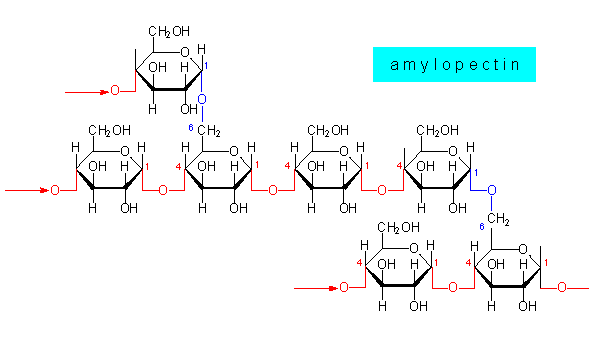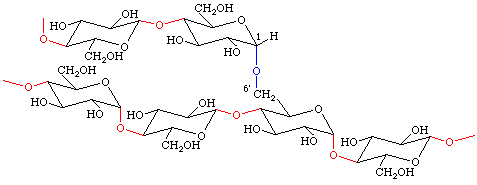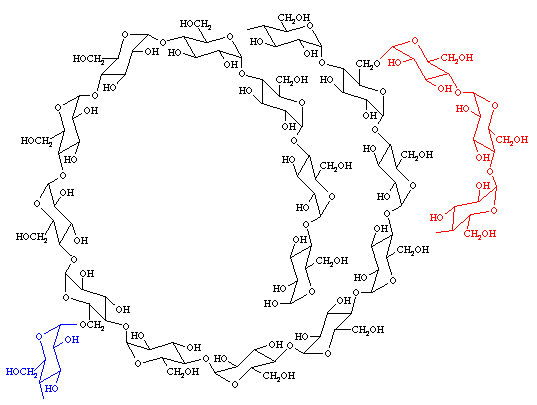Starch: alpha - 1 > 4 linkages are most common in starch though 1 > 6 linkages do occur, too (P. KARRER, 1921). Depending on the size of the molecule and its amount of 1 > 6 linkages, it is distinguished between amylose and amylopectin. Amylose molecules are largely unbranched, water-soluble and contain mainly 1 > 4 linkages. They are, like most polysaccharides, polydispers, meaning that the length of the molecule is not exactly defined, the number of glucosyl residues being between 200 and more than 1000.






The pyranose ring occurs usually in the boat conformation. The alpha - 1 > 4 linkages cause the helical structure of the polysaccharide chain. The inner diameter of the helix is big enough for elementary iodine to become deposited forming a blue complex (evidence for starch). Amylopectin is characterized by branchings. 2000 to 200,000 glycosyl residues form a molecule. alpha - 1 > 6 links occur on average at every 20th residue. Starch occurs in layered starch grains within cells. Their structure is specific for the respective species.
|
|